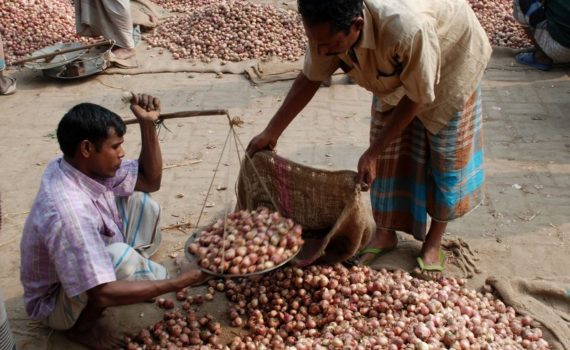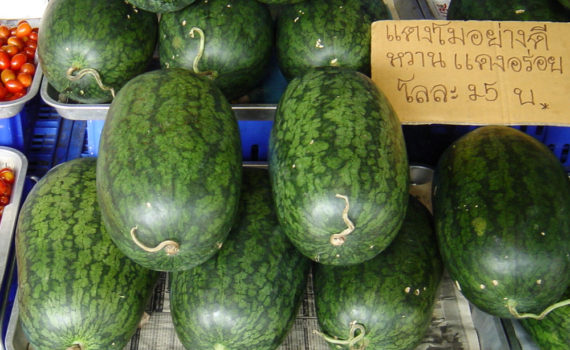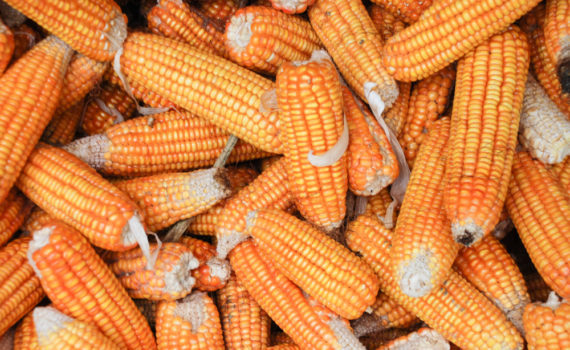Argan is a tree that is endemic to the semi-desert Sous valley of southwestern Morocco. The nuts are cold pressed to produce argan oil, which is used to treat hair and skin.
Agriculture
The rainbow has 7 colors. With cherries, oranges, lemons, lettuce, blueberries, grapes and sugar apple we can make an agricultural rainbow.
The world crops database includes hundreds of crops, but a few of them are quite special. Some of the most amazing crops include Durian, Sichuan pepper and Miracle fruit.
Fruit trees appear in a lot of paintings. Especially Dutch artist Vincent van Gogh has produced several works with all kinds of flowering trees. The following is a small gallery of paintings with fruit trees.
Fruits come in many shapes, sizes, tastes and of course colors. Painters often select a colorful display of fruits for their still life paintings. But also people carrying fruit baskets are popular topics in art. The following is a small gallery of paintings dedicated to fruits.
Cereals appear regularly in paintings, especially wheat fields seem to inspire artists. The following gallery of paintings includes several wheat fields painted by the Dutch artist Vincent van Gogh.
Flowers are colorful and have inspired many artists. The Dutch artist Vincent van Gogh painted a lot of colorful flowers and especially his sunflowers and irises are famous.
Agriculture has inspired many artists. Farmers collecting their crop from the field is a popular theme in agricultural art. Here is a small gallery of paintings that all relate to crop harvesting.
The FAOstat website provides production statistics for a wide range of crops and is updated every year. This post explores which are the crops with the highest global production. Crops are grouped in cereals, fruits, vegetables, pulses, fibers, and other categories.
Many vegetables are produced and traded all over the world, but which one is the most common? If we look at the weight (kilos) produced, tomatoes are the most popular vegetable in the world, followed by dry onions, cabbages and other brassicas, and cucumbers.
Many types of fruits are produced and traded all over the world. The most popular fruits in the world are bananas, apples, oranges and grapes.
Cereals include the most important food crops. The top three cereals in the world are Maize, Rice and Wheat. Together they represent about 90% of all cereals produced in the world.
The plow (or plough) is a basic instrument in agriculture and has been in use for thousands of years. Initially land was prepared with simple digging sticks or hoes. The first plows that were used were human powered, but when animals became domesticated plowing became easier with the use of horses and cattle.
Perhaps not so colorful as fruits, but also vegetables are very common in paintings. Here is a gallery of paintings about vegetables.
A (plant) species is called indigenous if it is originating or occurring naturally in a particular place. An indigenous species is also called a "native" species.
Farmer Field School (FFS) is a training approach. It is a season-long training activity for farmers that takes place in their ownfield. It is season-long so that it covers all the different developmental stages of the crop and their related management practices. The training process is always learner-centered, participatory and […]
The term “Neolithic founder crops” is used for the eight plant species that were first domesticated (about 7-10,000 years ago) by early farming communities in a region which is known as the Fertile Crescent in the Near East. Another term sometimes used is “Primary domesticates”. The eight crops are: Flax […]
Olericulture is the science of vegetable growing. It deals with the cultivation of herbaceous (non-woody) plants for their edible parts which are used as food.
A cultivar is a cultivated variety of a plant. The term “cultivar” is used instead of the term “variety” if the variety is the result of human action (e.g. breeding for certain characteristics such as color, taste or disease resistance). The term “variety” should be used if the type of […]
Plant breeding is the process of changing the genetics of plants with the objective to produce desired characteristics.
Grafting is a plant propagation technique whereby tissues from one plant are inserted into those of another so that the two sets of vascular tissues may join together.
System of Rice Intensification (SRI) is a methodology aimed at increasing the yield of rice, often using six interrelated practices.
Subsistence farming (or Subsistence agriculture) is self-sufficiency farming in which the farmer will try to grow enough food to feed his/her family. It refers to a situation where nearly all the food that is produced is consumed in the farm household. In addition to subsistence crops (e.g. rice, vegetables) the […]
A cash crop is a crop grown for sale rather than for subsistence. For example, a small farmer in the tropics could grow some rice for his own consumption and in addition may grow some tobacco and vegetables as cash crops (i.e. for direct sale). A cash crop is usually […]
A crop is a cultivated plant or agricultural produce considered as a group and often grown commercially on a large scale. For example a cereal (grain), vegetable or fruit can be called a crop. For example: Rice is a tropical crop. Note: The World Crops Database does not only include […]
Flowering plants are sometimes grouped in dicotyledons and monocotyledons. Monocotyledons (or monocots) have just one embryonic leaf or cotyledon. The dicotyledons (also called dicots) have seeds with two embryonic leaves.
Trees are called 'deciduous' if they drop their leaves during a certain season. Often this will be during the winter season in temperate climates or during the dry season in tropical climates.
Flowering plants are sometimes grouped in dicotyledons and monocotyledons. The dicotyledons (also called dicots) have seeds with two embryonic leaves or cotyledons. Monocotyledons (or monocots) have just one embryonic leaf.
The name cotton is used for several species in the genus Gossypium that are grown as a fiber crops. Upland cotton is the most important cotton species. Other cottons are Tree cotton and Creole cotton. Cotton fibres are used to make textile products.
The term Millet does not refer to just one taxonomic group but rather to an agronomic group of crop species. There are several types of millets, which are all small-seeded grains. What they have in common is that they are usually grown in drought-prone areas.
There are many types of Squashes and Pumpkins, which all belong to four different species in the genus Cucurbita. Each of these species includes several varieties with very different fruits and a large variety of names. This page provides some basic information on pumpkins and squashes, with links to separate pages for each of the four Cucurbita species.
Many species in the genus Cucurbita produce edible fruits.
Cole crops is a term used for a number of vegetables within the Brassica genus. Example of cole crops include: cabbage, turnip, chinese cabbage, kale and cauliflower.




















